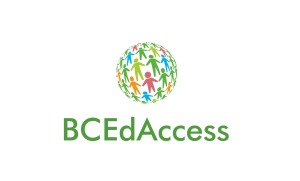For immediate release
Discrimination continues in 4th year of tracking exclusion in BC schools
Victoria, 29 August 2022 – This year’s Exclusion Tracker report shows BC children and youth with disabilities missed thousands of days of school, were left without support or instruction, were left out of field trips, clubs and events, were secluded and restrained, and numbers haven’t improved over 4 years of collecting and sharing data.
For 4 years parents, guardians and caregivers have been reporting to BCEdAccess the exclusion of their disabled children and youth from the BC school system.
This year’s BCEdAccess Exclusion Tracker reports show 4760 individual incidents of disabled students being excluded from their education in the 2021/22 school year.
The report unearthed other BC school exclusion trends in data, compared over 4 years:
- September – Gradual entry and partial days
54 reports specifically cited gradual entry/being asked to keep their child home due to no EA or Nursing support in September 2021/22.
This resulted in 342 missed school days for just these 54 students in the month of September.
- Restraint and Seclusion, and systemic oppression
“Schools are still keeping children in isolation and seclusion, away from their peers and the supports they need to de-escalate,” says Tracy Humphreys, Executive Director of the BCEdAccess Society. “Others are restraining children, without first using de-escalation, earlier intervention or following safety and support plans. Districts do not collect data or information on restraint and seclusion room use,” says Humphreys.
The report finds that both overall and more specifically within respondents who reported restraint or seclusion, there is overrepresentation of some child/youth identities.
| Restrained/Secluded | 2020/21 | 2021/22 |
| H and R | 4 | 2 |
| G | 16 | 16 |
| Waiting for assessment | 2 | 3 |
| Southeast Asian | 3 | 0 |
| East Asian | 0 | 2 |
| African | 1 | 2 |
| Indigenous | 5 | 6 |
| LGBTQ2SIA+ | 7 | 8 |
| Income under $25K | 5 | 4 |
Identities have been changed, but the following is in a report from last year’s survey:
A Kindergarten student is waiting for assessment. There was an incident where they showed some aggression and now are only allowed to attend 2 hours per day. They are West Asian and African, and have a single parent earning under $25K per year.
- Student Voice
This year a voluntary set of questions for disabled students to answer directly was included. 34 students responded. Nearly 78% of them were not told why they were excluded by the school:
Here’s what some of them had to say:
- Tell us about how you were excluded.
- I got in trouble for other kids bugging me.
- I played a game I did not understand
- Can’t be in the class with my friends; Can’t take the school bus
- They make me stay in the calm room. I am not allowed out. I am in jail.
- What do you hope will happen now?
- I will get the help I need
- I will get to play outside with my best friend. He is in the other class.
- They will make a plan for me
- Be with my friends in the class, take the school bus, be included
“BCEdAccess meets with the Ministry of Education and Child Care staff on a regular basis and efforts are made to address barriers to access for students but current legislation and policy does prevent a lot of resolution to individual issues. The Minister of Education and Child Care is aware of the Exclusion Tracker and several school district boards have seen our presentation on the Tracker data which includes suggested solutions.” Nicole Kaler, Chair, BCEdAccess.
“Not having an up to date provincial policy and having a ministerial order that allows exclusion is discrimination embedded in law. “ says Kaler.
-30
Media contact:
Tracy Humphreys, Executive Director tracy@bcedaccess.com
The BCEdAccess Society is an organization of families of children and youth with disabilities and complex learners all over the province of British Columbia. We champion and support children and youth who have disabilities and who are complex learners to reach their full potential in BC education, and in all aspects of their lives.
This is achieved through families supporting families, sharing information, providing education to families, allies, professionals and students, providing community engagement and awareness, and other activities to promote equitable access to education and inclusion for all. We run a well respected annual parent/guardian advocacy conference, bringing together families, self-advocates, educators and allies of children and youth with disabilities. We also do research into the exclusion of students with disabilities from school and community, and other disability issues impacting children and youth. We advocate to local and provincial government on behalf of families to improve accessibility in all aspects of the lives of children and youth with disabilities.
Learn more at https://equitableaccesstoeducation.wordpress.com/
Follow us on social media: @bcedaccess
What is restraint?
Restraints include the use of physical force, mechanical devices, or chemicals to immobilize a person.
What is seclusion?
A type of restraint, seclusion involves confining a person in a space from which the person cannot exit freely.

6 thoughts on “Discrimination continues in 4th year of tracking exclusion in BC schools”
Comments are closed.